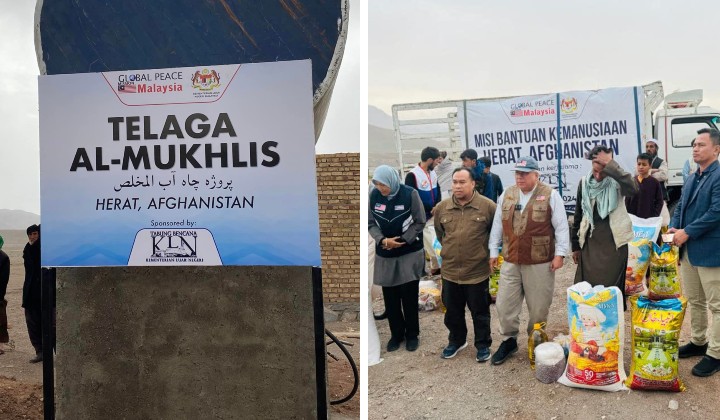Malaysians Rally for Solutions to Ease Traffic Jams
Seeking innovative suggestions, we turned to Facebook, engaging the online community for their input on tackling this pervasive problem.
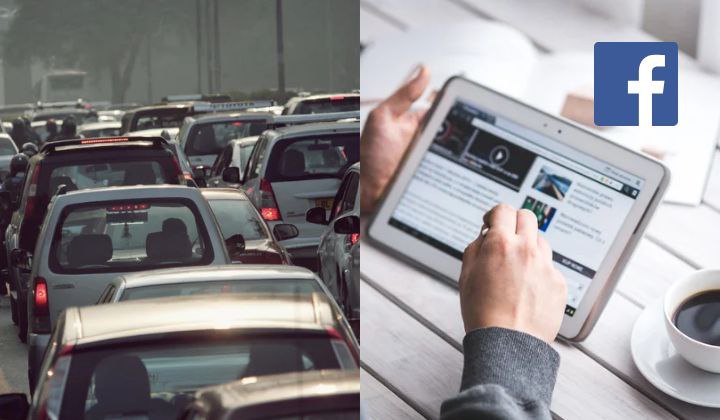
Subscribe to our FREE Newsletter, or Telegram and WhatsApp channels for the latest stories and updates.
Traffic congestion remains a pressing issue in Malaysia, with daily gridlocks testing the patience of commuters nationwide. Seeking innovative suggestions, we turned to Facebook, engaging the online community for their input on tackling this pervasive problem.
We used to be able to predict the timing of traffic jams in the city. However, traffic jams these days seem to be happening at all hours. This is likely because more and more Malaysians need to drive to get around and the number of drivers will increase as the years go on.
So, what are the common factors causing traffic?
The Facebook post above highlighted the multifaceted nature of the issue, pointing to factors such as insufficient public transport, road infrastructure, traffic management, and behavioural habits as key contributors to congested roads and traffic jams.
In the list below, we briefly explain how each factor leads to congested roads and traffic jams.
Insufficient public transport
Insufficient public transport options and the severe lack of last mile connections force more people to rely on private vehicles for their daily commute. This increased dependency leads to higher traffic volumes on the roads, particularly during peak hours. The uneven distribution of demand for public transport services can result in overcrowding on some routes while others remain underutilized, adding to congestion.
Inadequate road infrastructure
Inadequate road infrastructure contributes to the problem by not providing enough capacity to handle the volume of vehicles. Narrow lanes, lack of alternative routes, and poorly designed intersections all contribute to congestion, especially during peak traffic periods. Poorly maintained roads with potholes, uneven surfaces, and inadequate signage can lead to reduced speeds and increased travel times, further adding to traffic jams.
Poor traffic management
Poor traffic management practices also play a significant role in exacerbating congestion. Traffic signal coordination that is not synchronized or optimized can cause delays and congestion, especially at intersections. Ineffective enforcement of traffic rules, such as illegal parking or lack of lane discipline, can disrupt traffic flow and contribute to congestion. Additionally, inadequate traffic monitoring makes it challenging for authorities to respond promptly to incidents or adjust traffic flow to minimize congestion.
Although these common factors seem difficult to overcome, our Facebook post has gained some helpful suggestions from the netizens.
How do we approach this issue?
Improving public transport
A majority of netizens echoed a common sentiment: improving public transport is paramount. They called for enhanced services and connectivity to encourage more people to leave their cars at home, thus reducing traffic volume. To encourage more people to use the public transport, fares should also be lower.
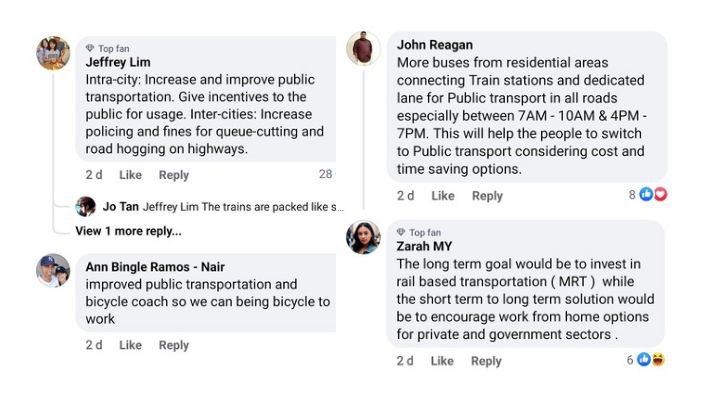
Improved public transport plays a crucial role in reducing congestion by encouraging a modal shift away from private vehicles. A well-connected and efficient public transport system can entice people to opt for public transport over cars, thus reducing the number of vehicles on the road.
Utilize designated lanes
Others proposed practical measures, such as utilizing the left and right lanes according to designated speeds. This suggestion aims to optimize road usage and improve traffic flow, especially during peak hours.
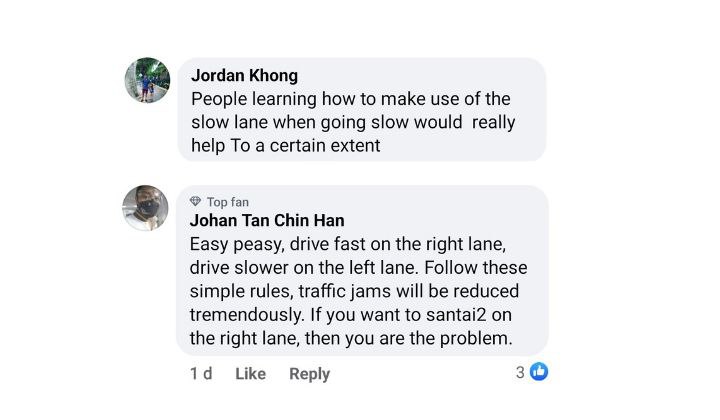
Designated lanes for different types of vehicles, such as buses or motorcycles, can help streamline traffic flow by separating slower-moving vehicles from faster ones. This can reduce congestion and improve overall traffic efficiency.
Improved traffic management
In terms of traffic management, suggestions included upgrading traffic lights and creating special lanes for motorcyclists. These improvements aim to streamline traffic movement and reduce bottlenecks at intersections.
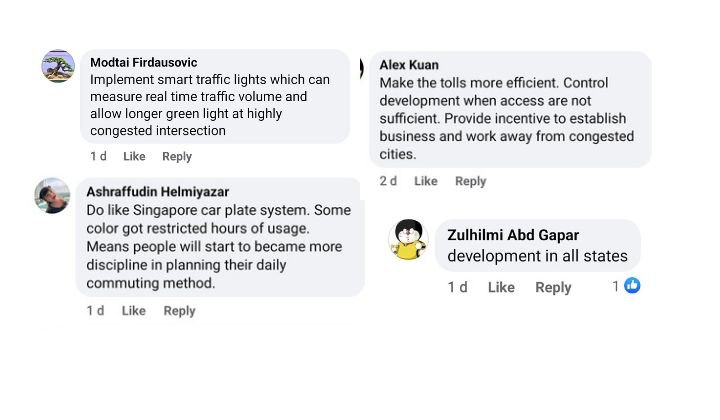
Improved traffic management, including better synchronization of traffic signals, real-time traffic monitoring, and responsive traffic flow management, can help reduce congestion by optimizing traffic flow and minimizing disruptions.
Staggered working hours
One particularly novel suggestion involved staggered working hours. By varying start and end times for different industries or sectors, commuters could avoid peak traffic periods, potentially easing congestion on major roads.
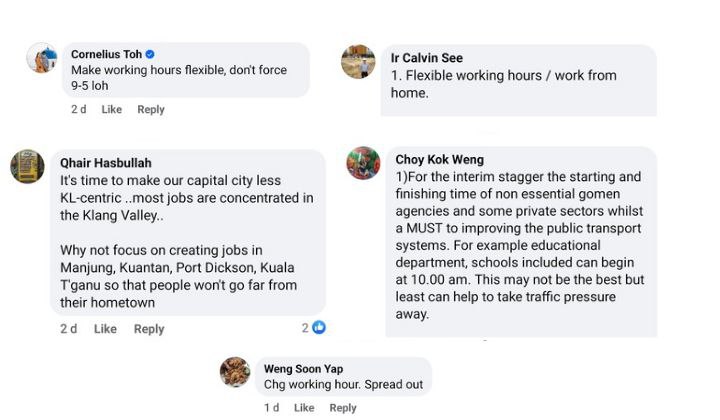
Staggering working hours for different sectors or industries can spread out the peak-hour traffic, reducing congestion during these times. This can also reduce stress for commuters and improve overall road safety.
The outpouring of suggestions from Malaysians underscores the urgency of addressing traffic congestion. While no single solution can solve this complex issue, the diversity of ideas reflects a collective desire for change. As discussions continue, the quest for innovative strategies to ease traffic jams remains a top priority for both the public and policymakers alike.
Share your thoughts with us via TRP’s Facebook, Twitter, Instagram, or Threads.




